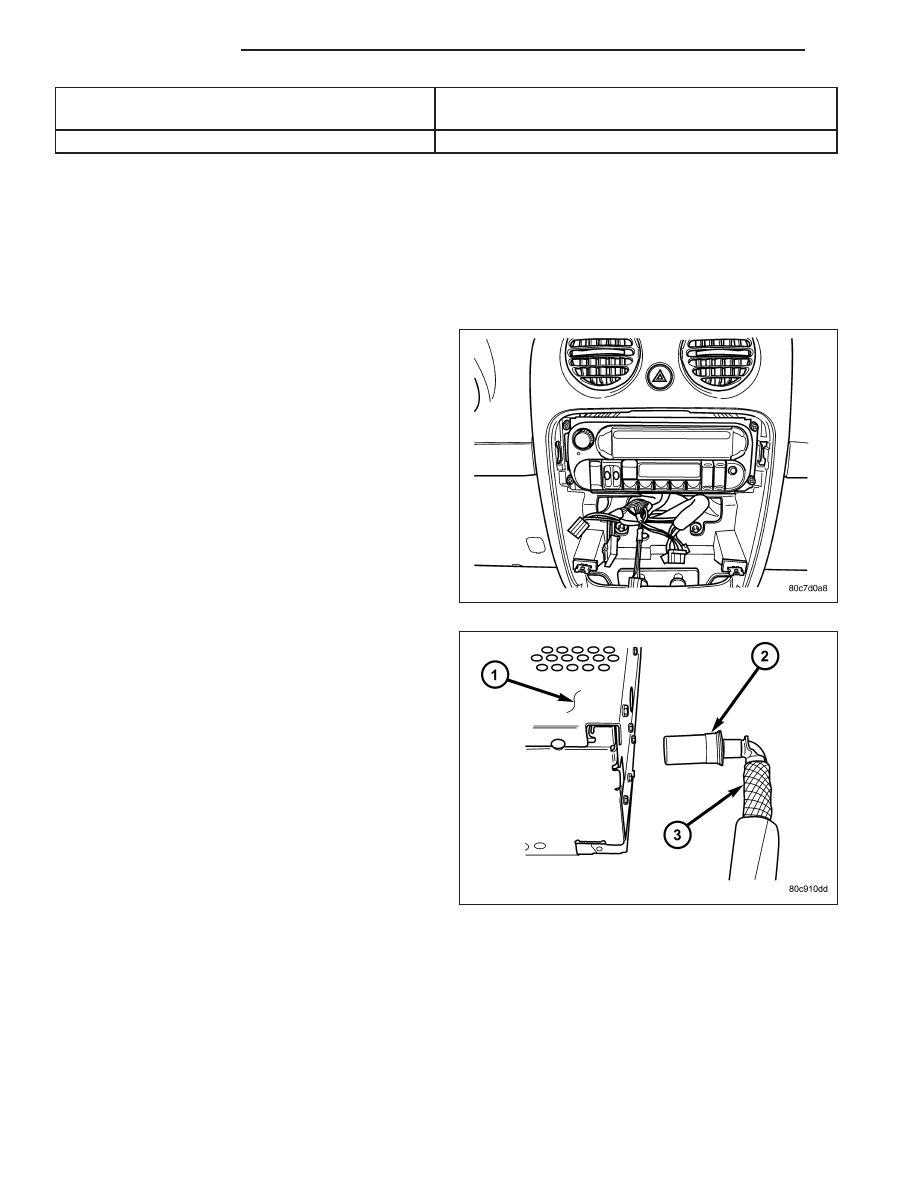Content .. 1437 1438 1439 1440 ..
Jeep Liberty KJ. Manual - part 1439

INTERNATIONAL
COUNTRY CODE
RADIO BROADCAST STD.
ZIMBABWE (8G1)
ROW
OPERATION
The radio receiver operates on ignition switched battery current that is available only when the ignition switch is in
the On or Accessory positions. The electronic digital clock function of the radio operates on fused battery current
supplied through the IOD fuse, regardless of the ignition switch position.
For complete circuit diagrams, refer to the appropriate wiring information.
REMOVAL
1. Disconnect and isolate the battery negative cable.
2. Remove the instrument panel center trim panel.
3. Remove the radio mounting fasteners.
CAUTION: Pulling the antenna cable straight out
of the radio without pulling on the locking antenna
connector could damage the cable or radio.
4. Disconnect the antenna cable by pulling the locking
antenna connector (2) away from the radio.
5. Disconnect the electrical harness connector(s).
6. Remove radio from instrument panel.
8A - 60
AUDIO/VIDEO
KJ